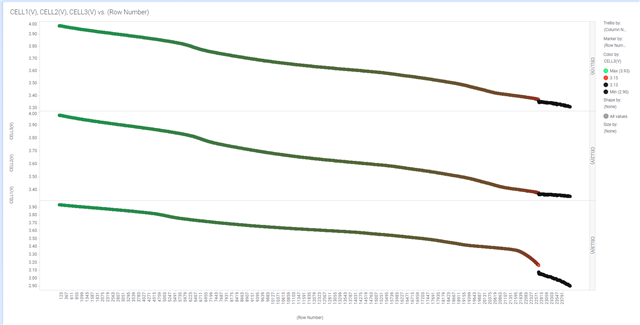Hello TI Experts,
We have designed a 3S3P NMC battery power management solution using the BQ4050. The BQ4050 was configured for the fixed EDV mode with set voltage thresholds for EDV0/1/2. However, during actual testing, the SOC did not get corrected based on the configured EDV thresholds. Instead, it triggered the pack's CUV (Cell Under Voltage) protection while the SOC still showed around 3%, as shown in the attached test data and configuration files. Could you please help identify where the issue might be?
Additionally, under normal circumstances, is EDV correction a fast and smooth process, or does it happen as a direct jump?
Thank you!


